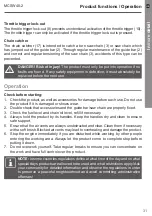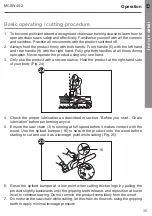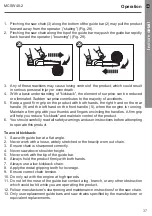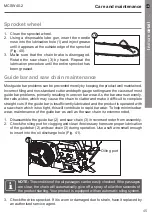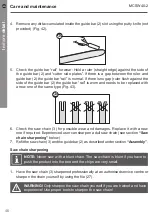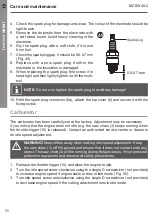
38
MCSW40-2
In
more
detail
. . .
WARNING!
Most “kickback” accidents happen during limbing! Pay close
attention to the position of the ‘kickback’ zone of the bar when you are “limbing
branches that are under tension.
Felling a tree
1. When bucking and felling operations are being performed by two or more persons at
the same time, the felling operations should be separated from the bucking operation
by a distance of at least twice the height of the tree being felled. Trees should not be
felled in a manner that would endanger any person, strike any utility line or cause
any property damage. If the tree does make contact with any utility line, the company
should be notified immediately.
2. The product operator should keep on the uphill
side of the terrain as the tree is likely to roll or
slide downhill after it is felled.
3. An escape path should be planned and cleared
as necessary before cuts are started. The
escape path should extend back and diagonally
to the rear of the expected line of fall (Fig. 30).
4. Before felling is started, consider the natural
lean of the tree, the location of larger branches
and the wind direction to judge which way the
tree will fall.
5. Remove dirt, stones, loose bark, nails, staples
and wire from the tree
Notching undercut
Make the notch (Fig. 31, B)
1/3 the diameter of the tree,
perpendicular to the direction
of falls (Fig. 31). Make the
lower horizontal notching cut
first. This will help to avoid
pinching either the saw chain
or the guide bar when the
second notch is being made.
30
31
Operation








